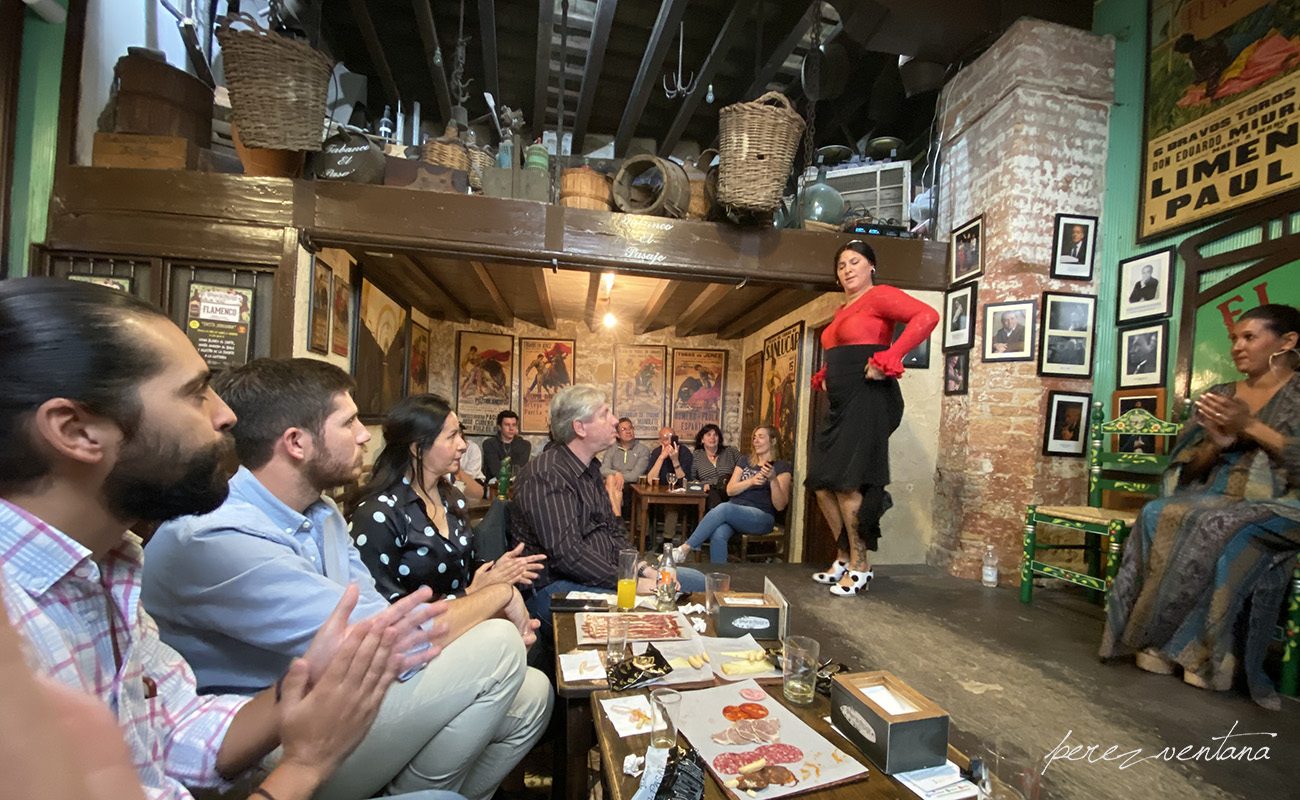Jerez: flamenco’s meeting place
The best in flamenco baile, cante and toque will be in Jerez next week, lets hope for the good weather to prevail, and for the light to shine on the nights of compás and pellizco. Lets never allow Jerez decline, because if it did, for whatever reason, the true heart of flamenco would stop beating.

Regardless of the program quality of the annual Festival de Jerez, where we can always find plenty of reasons to attend and enjoy whatever we like the most, or whatever we have the most interest in, it’s always a pleasure going to this city that is so flamenca, where we can live flamenco while walking along its neighborhoods, wondering how those houses looked like ,more than a century ago, with their yards where singing, playing the guitar and dancing was something as natural as life itself. I was very lucky to have the opportunity of befriending artists such as Tío Borrico, Terremoto, Parrilla, El Sordera and María la Burra, who told me about the daily life in those neighbourhoods so full of flamenco, such as San Miguel o Santiago, where life was quiet and harmonious. Things have changed, even as Jerez is still a city where flamenco is the essence of life for many people. When I go to the Festival de Jerez, which I have done many times, I notice that there are two different festivals, one in the theatres and commercial halls, and another in the peñas and taverns. Unlike Seville, Jerez has a flamenco feel to it. Artists meet each other to party, and it’s still possible to experience the thrill of seeing Diego Carrasco walking its streets, or watching Fernando el de la Morena marcando compás(1) on a worn out wooden bar in a tabanco. Turning a corner, we could find El Bo or El Chícharo, so dressed up you’d think they’re on their way to meet the King. In Jerez there’s flamenco everywhere, and much more so during the Festival. I worry when I read about the problems facing this annual festival of the arte jondo, about the uncertain future of the Villamarta theatre, and about the apathy of those who years ago lived in permanent enthusiasm. I don’t even want to think about it, because Jerez has made big efforts to keep this important festival going. It wasn’t easy to establish an event of this magnitude in a city prone to improvising bits of art in taverns or plazas, anarchically, without any planning. Flamenco cannot be conceived without Jerez, without its great artists, some of them immortalized in bronze statues, now part of the city’s urban and sentimental landscape. Jerez was always a quarry of flamenco, and that quarry is far from being exhausted, because young artists are always coming out of it, spreading the art of their land the world over, and also bringing the whole world to the art of their land. At the time of its festival, the city fills up with people from all over the world, who come to enjoy flamenco and also the ambiance and hospitality of the locals. Nowhere else in the world can flamenco be appreciated like in Jerez, which is an achievement of every and each of the artists from this city, from the mythical Frijones and Javier Molina to Fernandito Terremoto, Moraíto Chico and El Torta, who left us when they were still young and were mourned by thousands of hearts all over the world. The place to be this month is in Jerez de la Frontera, land of these geniuses and of others who fortunately are still with us. The best in flamenco baile, cante and toque will be in Jerez next week, lets hope for the good weather to prevail, and for the light to shine on the nights of compás and pellizco(2). Lets never allow Jerez decline, because if it did, for whatever reason, the true heart of flamenco would stop beating. Long life, then, to the Festival, and to that temple, the Villamarta theatre. Long life to the city’s peñas, which do such great work year-round. Long life to the artists and the good aficionados, who are the soul and the source of Jerez’ jondo miracle.
* Marcar compás: to keep the music’s beat, typically by knocking the knuckles on a table.
(1) Pellizco: literally “pinch”. In flamenco, this word refers to the artist’s ability to convey emotion and connect with the audience.




